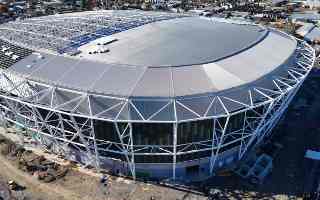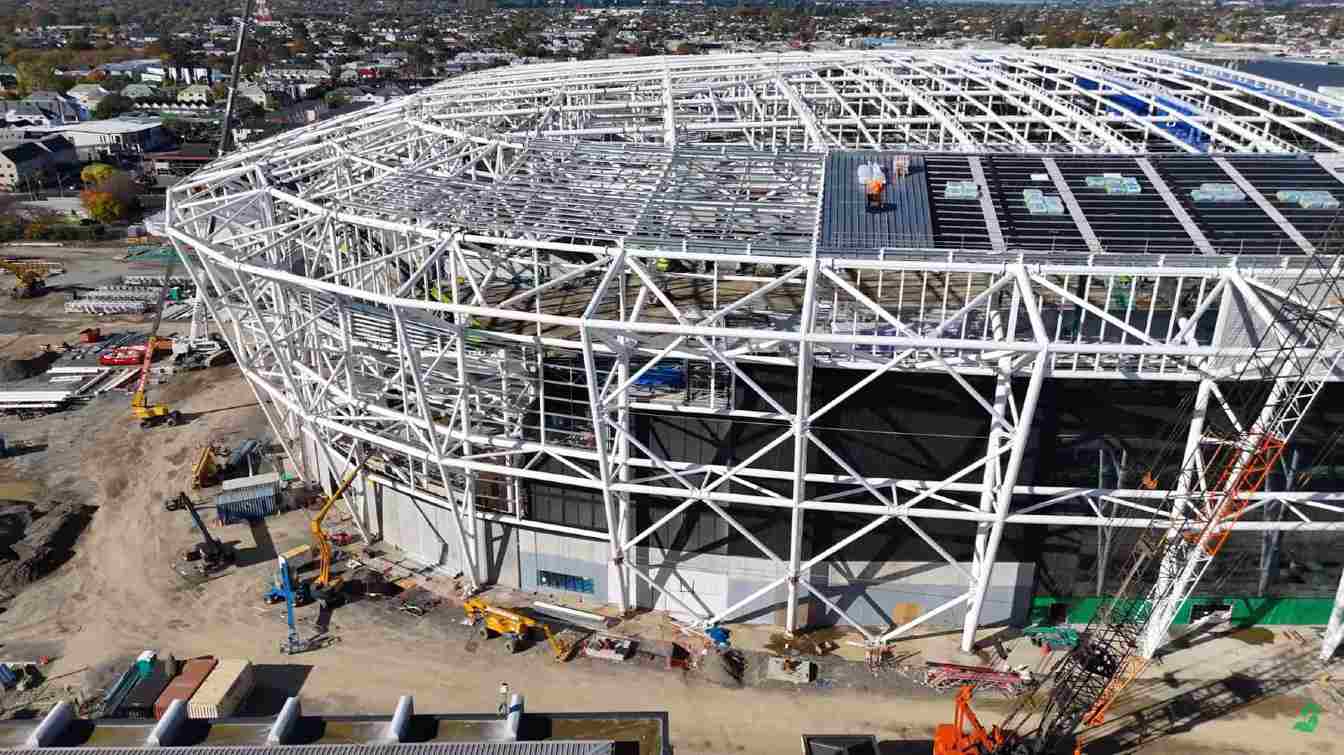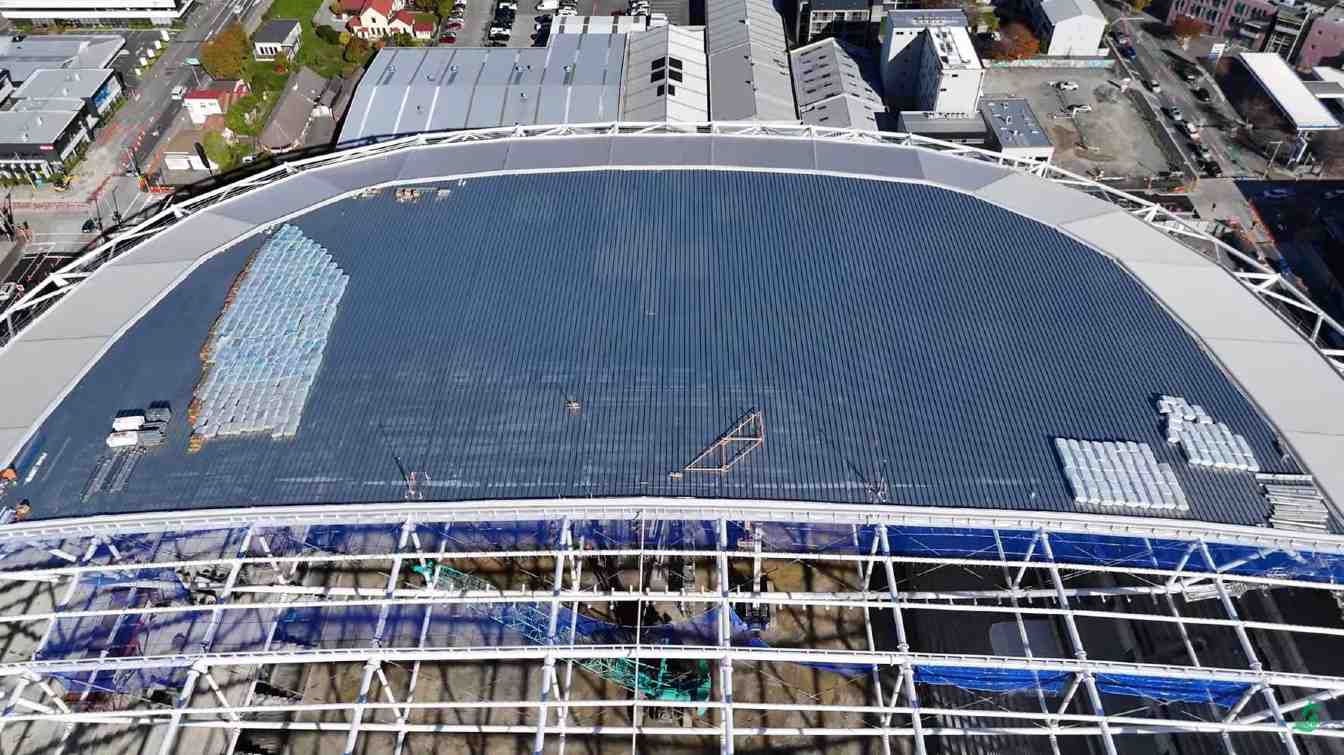New Zealand: First seat installed. Te Kaha is rising fast
source: StadiumDB.com; author: Jakub Ducki
 Installation of seats has begun at the new municipal stadium in Christchurch. It’s a symbolic step in the final phase of construction of the $683 million One New Zealand Stadium at Te Kaha, with the opening scheduled for April 2026.
Installation of seats has begun at the new municipal stadium in Christchurch. It’s a symbolic step in the final phase of construction of the $683 million One New Zealand Stadium at Te Kaha, with the opening scheduled for April 2026.
Advertisement
Milestone: first seat installed
The first seat has just been installed at the construction site in central Christchurch – a breakthrough moment symbolising the project’s transition into its final stage. Kent Summerfield, construction manager for the Christchurch City Council, said it was an important moment
for the entire project. All 25,000 permanent seats are expected to be installed by the end of the year.
As the seats are being fitted, fans are surely growing more excited about the upcoming opening. These projects often take years, and in the meantime, people look for entertainment that’s right at their fingertips – and available instantly, not necessarily tied to sport. While they wait, they can, for example, learn how to play blackjack online in NZ, which offers top gaming tips and generous welcome bonuses.
The seats are far from generic. Their kowhaiwhai pattern – a traditional Māori motif – is inspired by the symbol of the hammerhead shark (mangōpare). It was created by local artist Morgan Darlison, who also designed the stadium’s exterior artwork. The combination of black and grey with dynamic lines is meant to represent strength, resilience, agility and speed – qualities associated with athletic competition, but also with local cultural identity.
The stadium will ultimately hold 30,000 spectators for sporting events, but thanks to a possible expansion of the northern stand with 5,000 additional seats, its capacity will exceed 37,000 for concerts. That would make Te Kaha the largest venue of its kind on the South Island.
Lightweight, transparent and weather-resistant roof
Alongside seat installation, work is progressing on the stadium’s roof. The massive southern portion of the structure is nearly complete. In June, installation began on the transparent ETFE membrane – a modern material used in stadiums in London, Munich and Beijing.
The roof consists of two ETFE layers that form an air cushion. This design not only protects against rain and wind but also allows natural daylight to reach the pitch – essential for growing natural grass.
The structure also includes full stadium lighting, enabling high-quality evening events and broadcast coverage. The entire project remains on schedule and within budget – no small feat for a development of this scale.
Grand opening? Idea of a ‘super bogan’ weekend
While the stadium is expected to be ready by April 2026, the date of the first official event hasn’t yet been announced. Some concrete ideas are already on the table, though. City councillor Aaron Keown has proposed organising a super bogan weekend
in Christchurch – combining a concert by AC/DC with the final round of the Supercars championship at nearby Ruapuna, scheduled for 17–19 April.
A super bogan weekend in Christchurch would go off
Keown said during a city council meeting. While the proposal generated interest, it may require the stadium to open earlier than planned. Caroline Harvie-Teare, CEO of Venues Ōtautahi (VŌ), confirmed that such a scenario wasn’t off the table. Danny Schroder of VŌ added that they had already been in contact with AC/DC’s promoter, but the cost of the concert was staggering.
So far, no details have been released about the stadium’s opening event, but discussions are ongoing. We are in some heavy and intensive discussions around the launch events. We’ll be able to talk more about that in the coming months
Harvie-Teare said. The city’s priority is for as many Christchurch residents as possible to attend the inauguration.
Economic boost for region
The opening of Te Kaha will not only be a breakthrough in sports and culture but also a strong boost for the local economy. Venues Ōtautahi already manages several key facilities in the city, including Wolfbrook Arena, the town hall, Apollo Projects Stadium and Hagley Oval. In just nine months – up to the end of March – these venues welcomed 480,000 attendees across 304 events. By year’s end, those figures are projected to rise to 670,000 people and 406 events.
These events have contributed $28 million to the Canterbury economy – with $18.4 million coming from out-of-town visitors and $9.6 million generated by local suppliers, contractors and caterers. As much as 78% of food served during events came from the region, and 69% of services were delivered by local businesses.
Venues Ōtautahi ended the first three quarters of the year with an operating profit (EBITDA) of $488,000 – despite earlier forecasts of a loss. Contributing to this result were a new partnership with Ticketmaster for ticket sales, a higher number of events and growing interest in culture and sports across the city.
New face for Christchurch
The new stadium is meant to fill the void left by Lancaster Park, which was destroyed in the 2011 earthquake. Since then, Christchurch has lacked a modern, roofed, multi-purpose venue that meets today’s needs. Te Kaha is set to change that – blending local cultural heritage, advanced technology and functionality that will attract top-tier sports events and global concert tours.
The venue is being built right in the heart of Christchurch. Rising inflation and the growing cost of construction materials and labour have pushed the stadium’s estimated cost to a staggering $683 million (up from an originally planned $473 million).
Advertisement

 StadiumDB
StadiumDB ©
©  ©
©